Vocabulary enhancement Normal Elementary Phonics Worksheets for Ages 3-8
6 filtered results
-
From - To
Enhance your child's vocabulary with our Normal Elementary Phonics Worksheets, designed for children ages 3-8. Our expertly crafted worksheets are perfect for building strong foundational language skills, focusing on essential phonics, letter recognition, and word formation. Through engaging and interactive activities, young learners will expand their vocabulary, improve reading comprehension, and develop a love for learning. Ideal for classroom use or at-home practice, our worksheets ensure that children gain confidence and proficiency in their early reading journeys. Help your child master the building blocks of language with Kids Academy's interactive phonics worksheets!
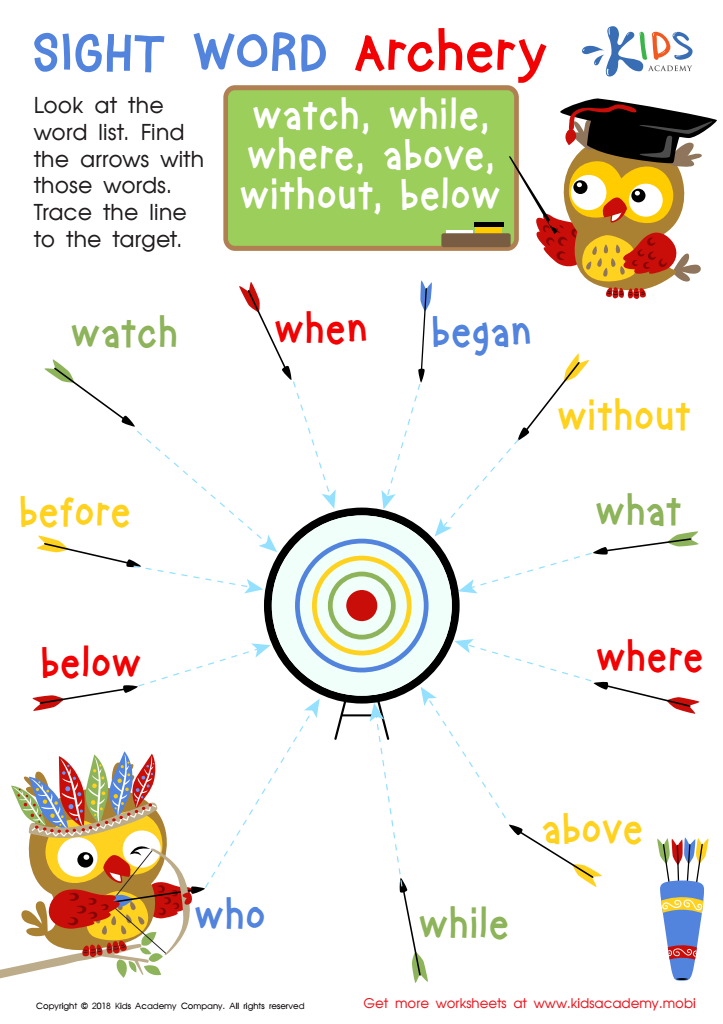

Sight Word Archery Worksheet
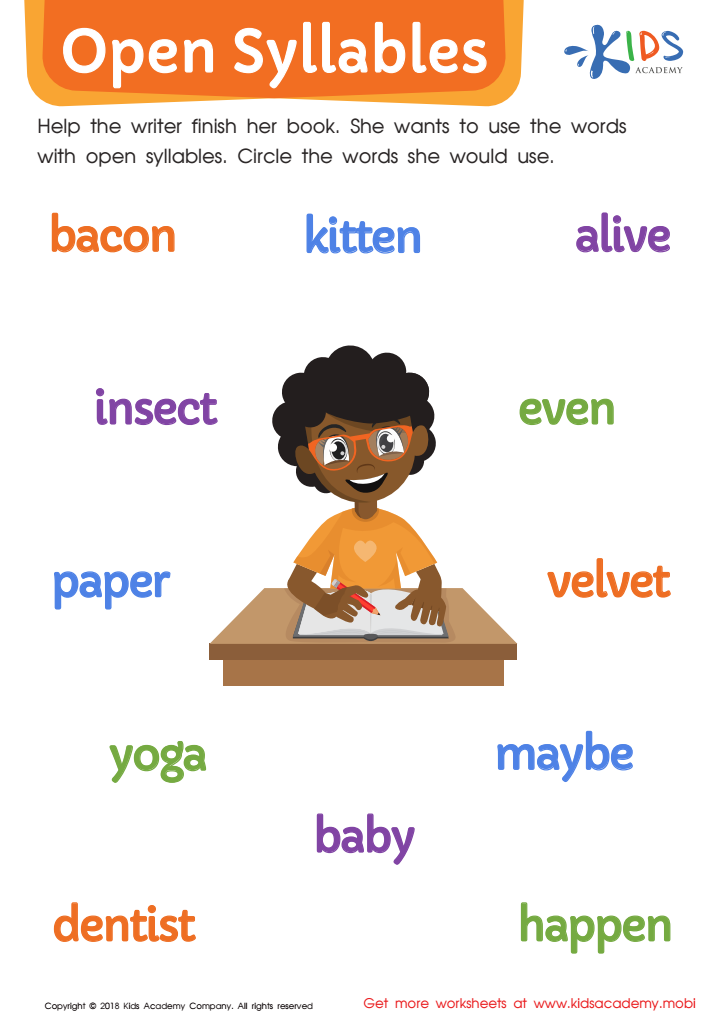

Open Syllables Worksheet


How Many Syllables? Worksheet
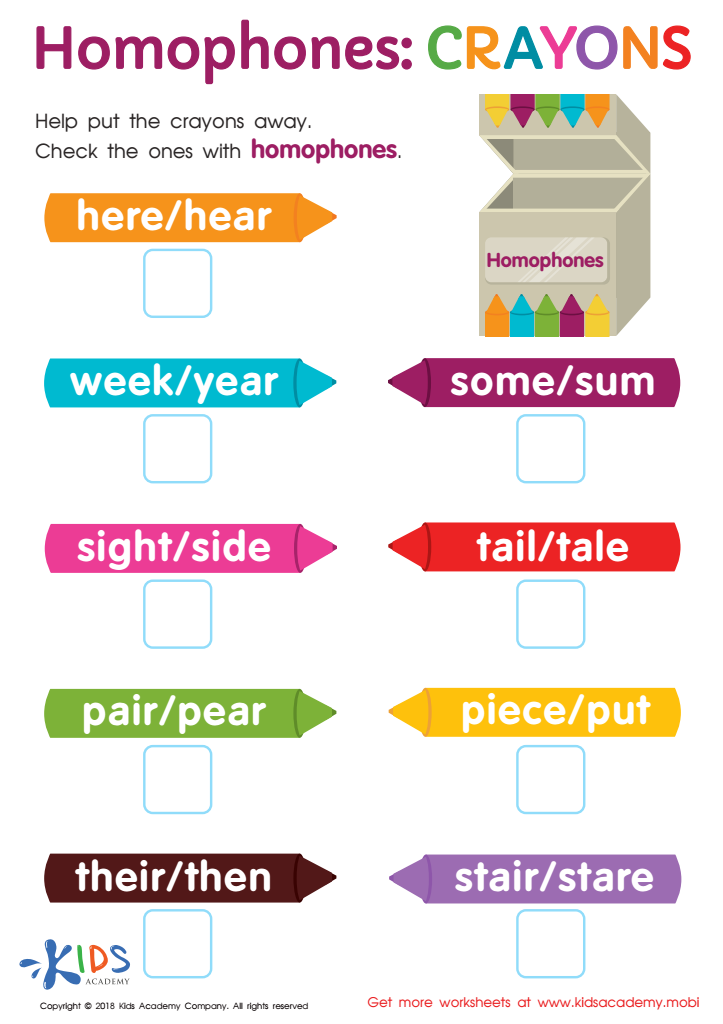

Homophones: Crayons Worksheet
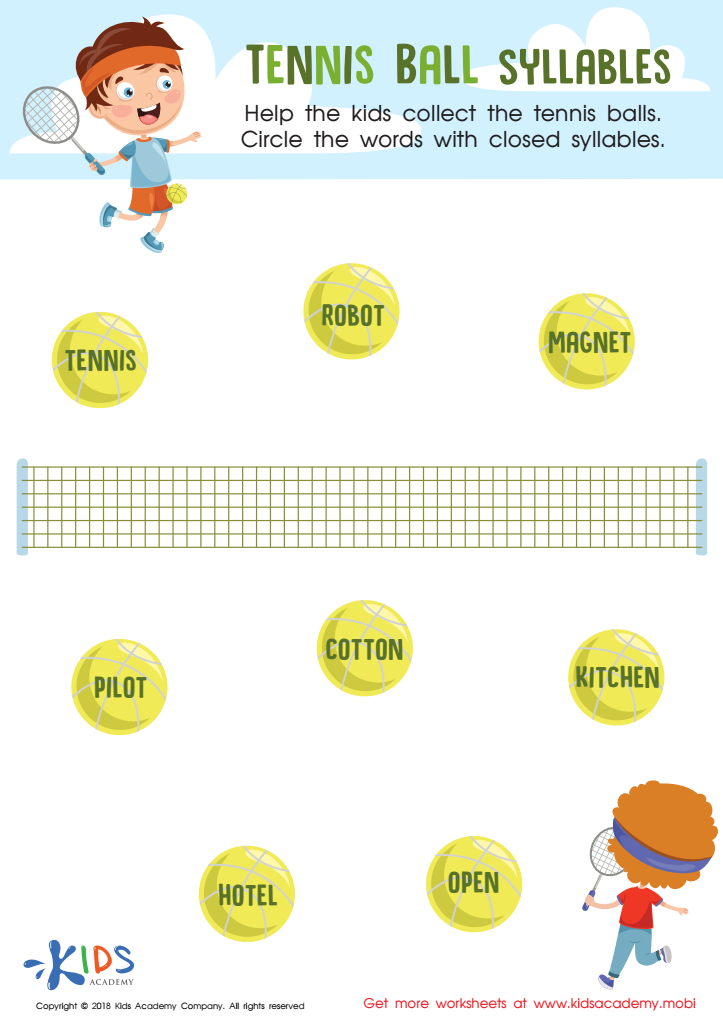

Tennis Ball Syllables Worksheet
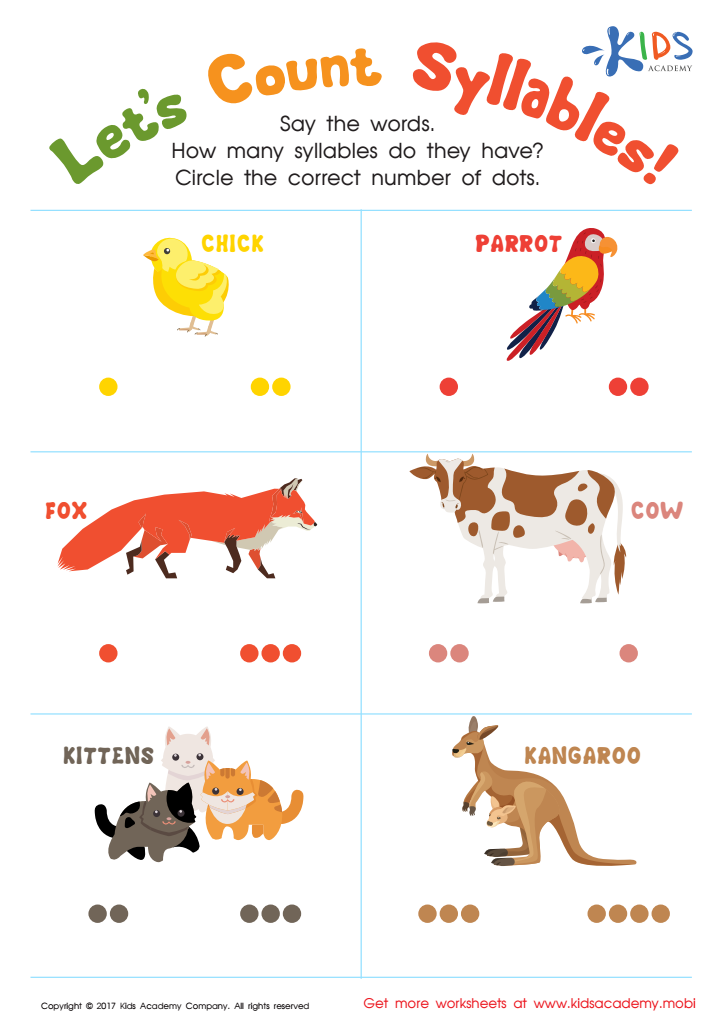

Lets Count Syllables Worksheet
Early vocabulary enhancement and elementary phonics for children aged 3-8 are foundational for their overall language development and academic success. Parents and teachers who prioritize these elements enable children to develop strong literacy skills from an early age.
Vocabulary enhancement is crucial because it helps children understand and use language effectively. A rich vocabulary allows kids to comprehend stories, follow instructions, and express themselves clearly. Studies suggest that children with a larger vocabulary tend to perform better in reading and writing, as they can easily recognize words and understand their meanings in different contexts.
Elementary phonics is equally important, as it teaches children how to correlate sounds with letters and letter patterns, which is fundamental for reading and writing. Phonics instruction helps children decode new words, making reading less intimidating and more enjoyable. By integrating phonics with vocabulary building, children not only learn how to read words but also understand them, leading to better reading comprehension.
Engaging children in vocabulary and phonics activities also fosters a love for reading. This love for reading can spark curiosity and a lifelong passion for learning. Therefore, by investing in vocabulary enhancement and phonics from ages 3 to 8, parents and teachers set the stage for linguistic proficiency, academic achievement, and a sustained interest in education.

 Assign to My Students
Assign to My Students














